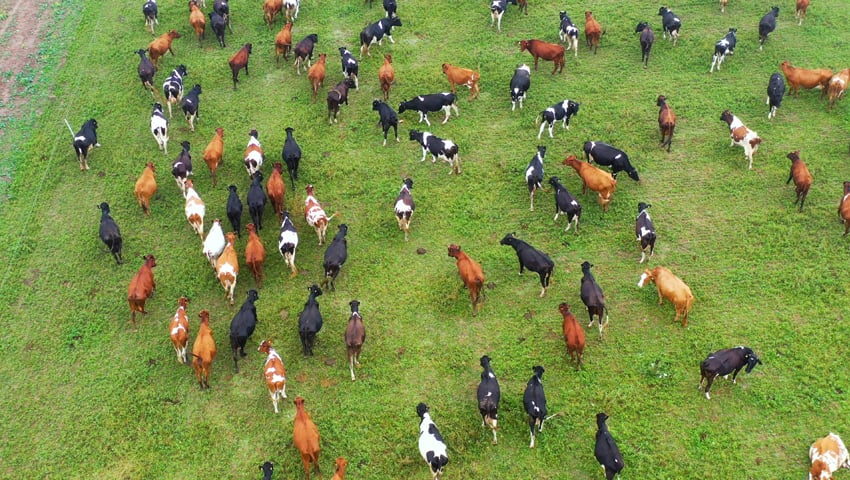Research from the Carbon Cowboys research team has provided evidence that adaptive multi-paddock grazing delivers improved soil properties, when compared with conventional grazing systems.
The researchers explain that “Within managed ecosystems, such as livestock-grazed grasslands, soil physical, chemical, and biological properties may be severely compromised relative to native grasslands.” They set out to demonstrate that by switching from conventional grazing to adaptive multi-paddock (AMP) grazing soil health can be retained and enhanced.
The research analysed soils from ten grasslands in the southeast United States representing either conventional or AMP grazing management. They analysed the A-horizons of these soils for physical, chemical, and biological properties considered indicators of soil health across each management type.
The researchers found that continuous grazing can affect soil properties and health by reducing soil carbon stocks and other available nutrients, while creating bare patches in vegetation that may enhance erosion and run off.
But, by contrast, AMP grazing, an intensive form of rotational grazing that moves dense cattle herds quickly over the land followed by rest periods for the regrowth of plants, can be used as a regenerative grassland management tool to improve soil properties such as soil carbon stocks, soil structure, as well as nutrient and water retention.
The researchers say that “The number of soil properties that were improved where AMP grazing management was implemented (e.g., chemical properties, soil organic matter fraction distribution, and total soil organic carbon and nitrogen stocks) highlights the potential of AMP grazing management to better supply and retain essential nutrients for plant productivity.”
The team found that the impact of AMP grazing was highly positive. “Chemical soil properties (e.g., cation exchange capacity, base saturation, electrical conductivity) were improved where AMP grazing management was implemented. Farms using AMP grazing management had greater A-horizon carbon and nitrogen stocks in bulk soils and across multiple soil organic matter fractions. No biological indicators measured were affected by the grassland management except potential nitrogen mineralization rate, which was lower under AMP.
“Taken together, these results provide evidence that AMP grazing management could be implemented to regenerate several grassland soil properties across land currently under conventional grazing management.”
These findings demonstrate that farms implementing AMP grazing management will be better equipped to support grazing operations while also maintaining a sustainable soil environment.
They provide evidence that AMP grazing management could be used as a way to improve grassland soil health across a large area of currently conventionally managed grazing lands.
Find more Carbon Cowboys research here
